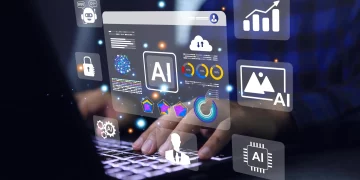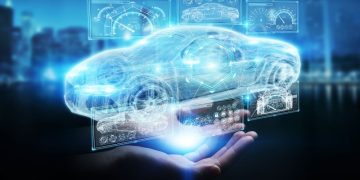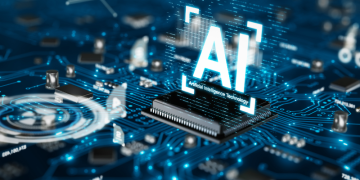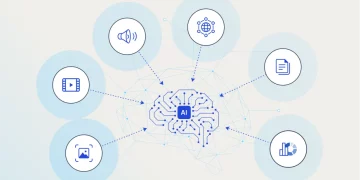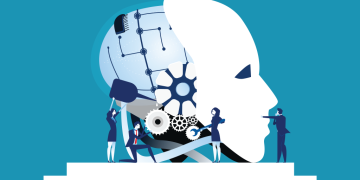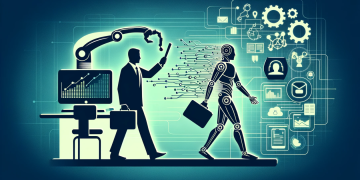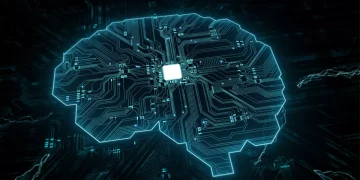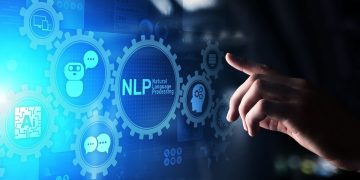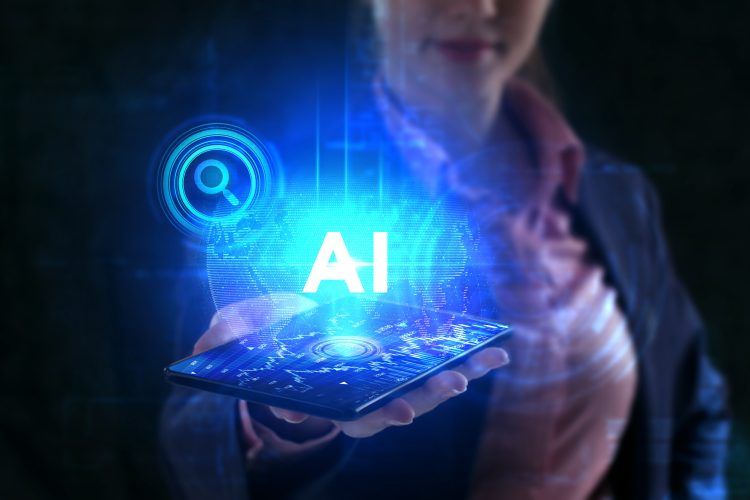Artificial Intelligence (AI) has evolved from a futuristic concept to a transformative force reshaping industries, economies, and societies at an unprecedented pace. However, as AI advances, it brings both incredible opportunities and significant challenges. While the technology promises to enhance efficiency, innovation, and decision-making, it also raises profound ethical questions and societal concerns. Industry experts are grappling with these dual aspects—the potential for groundbreaking advancements and the ethical dilemmas they pose.
In this article, we explore how AI experts view the ongoing tension between technological progress and ethical considerations. We will examine the key challenges AI faces in terms of bias, transparency, accountability, and its societal impact, as well as the immense opportunities AI holds for improving industries, healthcare, education, and more.
1. The Dual Nature of AI: Technological Promises and Ethical Pitfalls
AI, at its core, is designed to automate tasks, analyze data, and make decisions that traditionally required human intelligence. The technological promise is vast—AI could automate millions of jobs, enhance productivity, revolutionize healthcare, and even solve global challenges such as climate change.
However, these benefits are accompanied by significant ethical concerns. Dr. Fei-Fei Li, a prominent AI researcher and co-director of the Stanford Human-Centered AI Institute, emphasizes that while AI systems hold immense potential, they must be developed in a way that ensures they are beneficial for all people, not just the privileged few.
a. The Opportunity: Enhanced Productivity and Efficiency
The primary advantage of AI is its ability to process vast amounts of data quickly and accurately, making decisions with speed and precision far beyond human capabilities. In healthcare, AI can help detect diseases like cancer earlier, predict patient outcomes, and recommend personalized treatment plans. In finance, AI-powered algorithms can assess risks, optimize investment strategies, and detect fraud.
In industries like manufacturing, transportation, and agriculture, AI is poised to increase automation, improving efficiency and productivity while reducing operational costs. For instance, autonomous vehicles and drones are expected to revolutionize logistics, while AI-powered robots in warehouses will enhance supply chain management.
b. The Challenge: Ethical Implications of AI Decisions
The flip side of AI’s rapid growth is its potential for ethical pitfalls. AI systems are only as good as the data they are trained on, and if this data reflects societal biases, the AI will likely perpetuate or even exacerbate these biases. One notorious example of this is AI hiring algorithms, which, when trained on biased historical data, can discriminate against women and minority groups.
Timnit Gebru, an AI ethics researcher and former Google researcher, argues that this type of bias poses a significant threat, as biased AI systems can reinforce societal inequities in ways that are both subtle and pervasive. The challenge lies in designing AI that doesn’t simply reflect existing inequalities but instead actively promotes fairness and justice.
2. The Challenge of AI Bias: Tackling Inequality in Algorithms
AI models are trained on historical data, and if that data reflects bias—whether it’s gender, racial, or socioeconomic—AI systems can amplify and reproduce those biases. This has led to significant concerns over the ethical implications of AI’s decision-making capabilities.
a. Racial and Gender Bias in AI
A prime example of this challenge can be seen in facial recognition technologies. Studies have shown that these systems often have higher error rates for people with darker skin tones, particularly Black individuals. This can lead to wrongful arrests, misidentifications, and other discriminatory practices.
Similarly, AI-driven hiring tools that analyze resumes and candidate profiles have been shown to be biased toward male applicants. Since much of the data AI uses for recruitment is based on historical hiring trends—which have disproportionately favored men—the algorithm may reject qualified female candidates or candidates from diverse backgrounds.
b. Addressing Bias Through Transparent Design
Industry experts are advocating for transparent and inclusive AI design. Leaders like Kate Crawford, a senior principal researcher at Microsoft Research, argue that AI systems need to be designed with diversity in mind, not only in terms of data but also in the teams developing them. Diverse teams are more likely to recognize potential issues and biases in the design process, ensuring that AI tools are fair and equitable.
Additionally, experts believe that regular audits of AI systems are necessary to ensure they remain free from bias over time. Companies must prioritize fairness and transparency, allowing for external oversight and accountability.
3. Transparency and Accountability: The “Black Box” Problem
One of the most significant concerns with AI systems, particularly those powered by deep learning algorithms, is their lack of transparency. Many AI models, especially neural networks, are often described as “black boxes” because it can be difficult to understand how they arrive at specific decisions. This lack of interpretability raises important questions about accountability, especially when AI is used in high-stakes fields like healthcare, law enforcement, and criminal justice.
a. The Need for Explainable AI (XAI)
To address the “black box” problem, experts emphasize the importance of developing Explainable AI (XAI)—systems that provide clear explanations for how decisions are made. Explainability is particularly crucial in sectors like medical diagnosis, where doctors need to understand why an AI has recommended a particular treatment or diagnosis.
Dr. Yoshua Bengio, one of the pioneers of deep learning, has argued that developing XAI is a critical research priority. He believes that if AI systems cannot explain their decisions, they will not be trusted, especially when dealing with sensitive issues like healthcare or criminal justice.
b. Ethical Accountability in AI Decision-Making
As AI systems become more autonomous, the issue of accountability becomes increasingly complex. If an AI system makes a harmful decision, who is responsible? Is it the developer who created the system? The company that deployed it? Or the AI itself?
Ryan Calo, a law professor at the University of Washington and expert in AI ethics, proposes that accountability should lie with the developers and organizations responsible for creating and deploying AI systems. Legal frameworks and regulatory bodies will need to be established to ensure that companies take responsibility for the ethical use of AI and that individuals are protected from harm.
4. The Impact on Employment: Job Creation vs. Job Displacement
One of the most contentious issues surrounding AI’s rise is its impact on the job market. While AI has the potential to automate millions of jobs—especially in manufacturing, transportation, and customer service—it also promises to create new job opportunities in fields like AI development, data science, and cybersecurity.
a. Job Displacement and the Need for Reskilling
AI-driven automation may lead to job displacement in industries where routine tasks can be easily automated. The World Economic Forum predicts that by 2025, AI will replace 85 million jobs worldwide. While this is a concern, experts like Kai-Fu Lee, author of AI Superpowers, argue that AI will also generate 97 million new jobs—particularly in fields that require human creativity, critical thinking, and emotional intelligence.
To mitigate the effects of job displacement, experts stress the importance of reskilling and upskilling programs. Workers who are at risk of losing their jobs due to automation should be trained in new skills, particularly those related to AI, data science, and machine learning.
b. AI-Driven Innovation and New Industries
AI’s potential to revolutionize industries can also lead to the creation of entirely new markets. For example, the AI-driven healthcare industry could create thousands of jobs for data scientists, AI researchers, medical experts, and administrators. AI-based content creation, from writing and video production to game design, is also an area that is expected to see significant growth, creating opportunities for new types of jobs in entertainment and media.
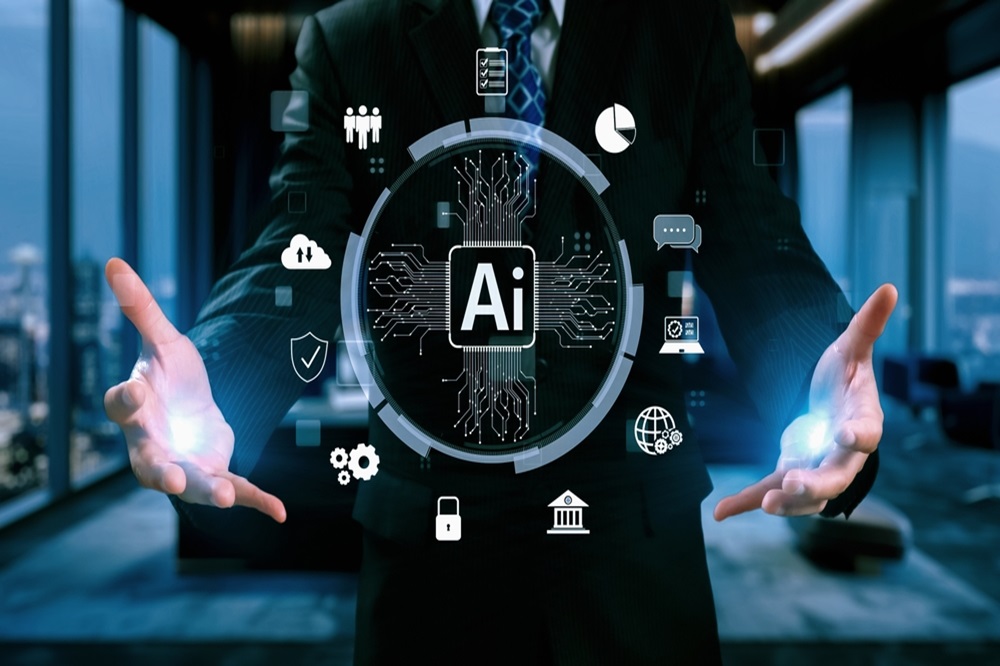
5. The Global AI Race: Geopolitical Implications
As nations invest heavily in AI research and development, a new geopolitical race has emerged, with countries like the United States, China, and the European Union vying for dominance in the AI field.
a. AI as a National Security Concern
Experts point out that AI is no longer just a technological tool but a national security issue. AI-powered weapons, autonomous drones, and surveillance systems are becoming critical components of military strategy. Geopolitical tensions are rising as nations seek to control AI technologies that could give them a strategic advantage.
b. AI Regulation and Global Cooperation
To ensure that AI develops ethically and responsibly, international collaboration will be essential. Global standards and regulations must be established to govern the use of AI across borders. Experts like Kate Crawford have argued that the future of AI governance should focus on international cooperation to ensure that AI benefits humanity at large and does not create more inequality or exacerbate geopolitical conflicts.
6. Opportunities in AI for Social Good
Despite the challenges, experts also see vast opportunities for AI to be harnessed for social good. AI can be used to address some of the most pressing global challenges, including climate change, poverty, and healthcare disparities.
a. AI for Environmental Sustainability
AI can help optimize energy usage, predict climate patterns, and reduce waste. Experts predict that AI will play a key role in addressing climate change, helping to create sustainable solutions for energy production, resource management, and environmental protection.
b. AI in Global Healthcare
AI-powered diagnostics and treatments can address healthcare inequalities in developing countries by providing affordable and accessible healthcare solutions. Machine learning models can help predict disease outbreaks, assist in drug development, and improve global health outcomes.
Conclusion: Navigating the Ethical Terrain of AI’s Future
As AI continues to evolve, it will undoubtedly reshape our world in profound ways. The technological possibilities are vast, but so too are the ethical challenges. Industry leaders agree that AI’s future will require a delicate balance between innovation and responsibility. The ethical issues surrounding bias, transparency, accountability, and social impact must be addressed in tandem with technological progress to ensure that AI serves the greater good.
The next few years will be critical in determining how AI is developed, deployed, and regulated. As industry experts continue to grapple with the dual nature of AI—its immense promise and its potential for harm—collaboration, transparency, and ethical frameworks will be key to ensuring that AI benefits humanity as a whole.




